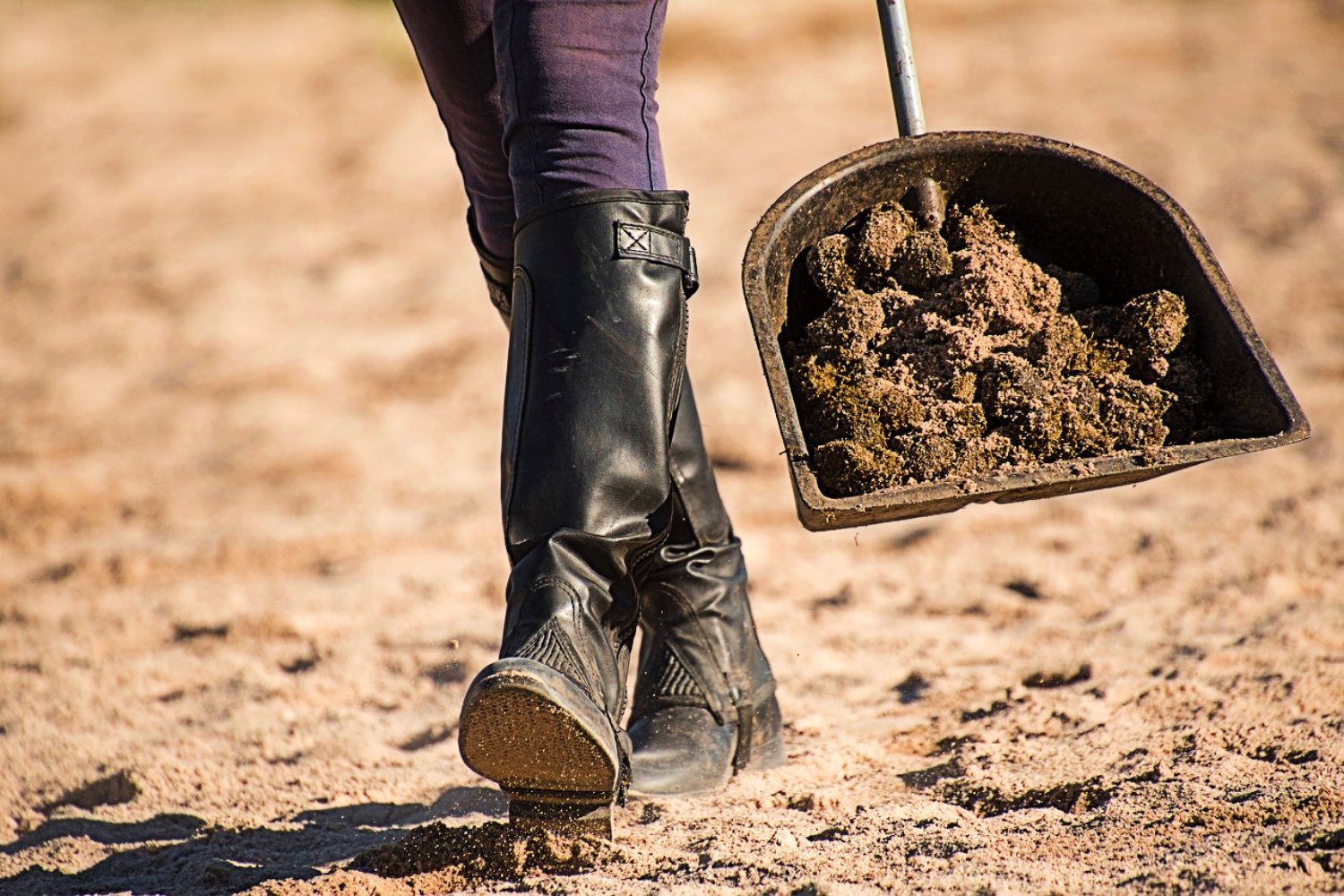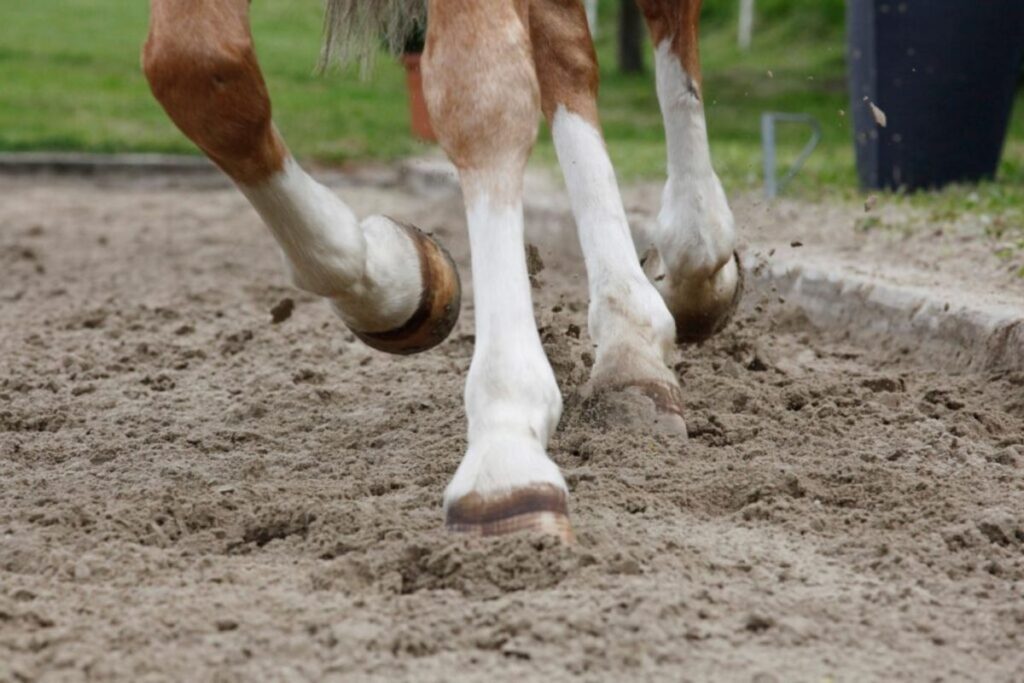Menu

You have probably heard this sentence many times: "Remember to scoop up the droppings after your horse!" And with great discipline you have walked countless rounds in the arena looking for your horse’s poop. You have probably also arrived at the arena and discovered that the rider before you ‘forgot’ to pick her horse’s droppings. Bullocks! - Once again you are faced with the sh..!
But do not worry, all your hard work is not wasted. Because you are actually contributing to the life expand of the arena’s footing.

You may also like to read: Children and riding – when and how?
A riding arena´s footing usually consists of four layers. Most likely a geotextile cloth is laid at the bottom, which covers the entire area. Such a cloth is also necessary on the rocky surface to prevent stones from working their way into the top layer. A supportive layer is laid on top which is then compressed. It is not easy to find a material that, while being compressed, allows the rainwater to sift through. If the carrying layer becomes too dense and hard, the water cannot seep through. As a result, the arena is flooded. However, if the supportive layer becomes too loose, the horses' hooves will mix the top layer with the bottom one and the footing will get too deep. The thickness of the support layer depends on the ground, but a minimum of 15 cm. is usually a good footing thickness.
There are many different types of top layers. Most common are sand, tile, fiber, rubber materials, seashells and combinations thereof. It is important that the top layer is elastic. At the same time, the bottom must be hydrated, to preserve its texture and prevent the different layers from mixing. But what happens if your horse drops a "gift", and instead of picking it up, you leave it?
A riding arena´s footing consists of closely matched materials with different textures that interact with each other and together form an ecosystem. This system is made so that the footing’s drainage and elasticity last as long as possible. If a foreign element is mixed into this system (such as horse poop), the material's cooperative ability changes.
Horse poop is an organic material that turns into soil over time if not removed. This soil counteracts the layers of the track’s footing, and over time the suspension, the durability of the sand and the material's ability to stay frost-free deteriorates. This causes the footing to become heavy. The horse then steps deeper thus breaking down the deeper layers. In addition, it is also worth remembering that no horse profits from training on a regular basis in heavy arenas as it strains the joints.
The consequence of not removing the horse’s droppings is that the surface of the arena must be levelled, straightened and filled up, far more often than if you scoop the poop every time when you are done riding.
We have done a little bit of research, and each year approximated two tons of horse poop is removed from an average arena. Imagine if we did not. If not removed, we would be riding up under the roof in a matter of no time. But a far bigger problem with the droppings is that they are filled with bacteria and fungal spores, which will quickly grow and spread. This has major negative consequences for the indoor climate and for you and your horse's respiratory systems.
This article was originally published in September 2020 and has since been revised and edited.